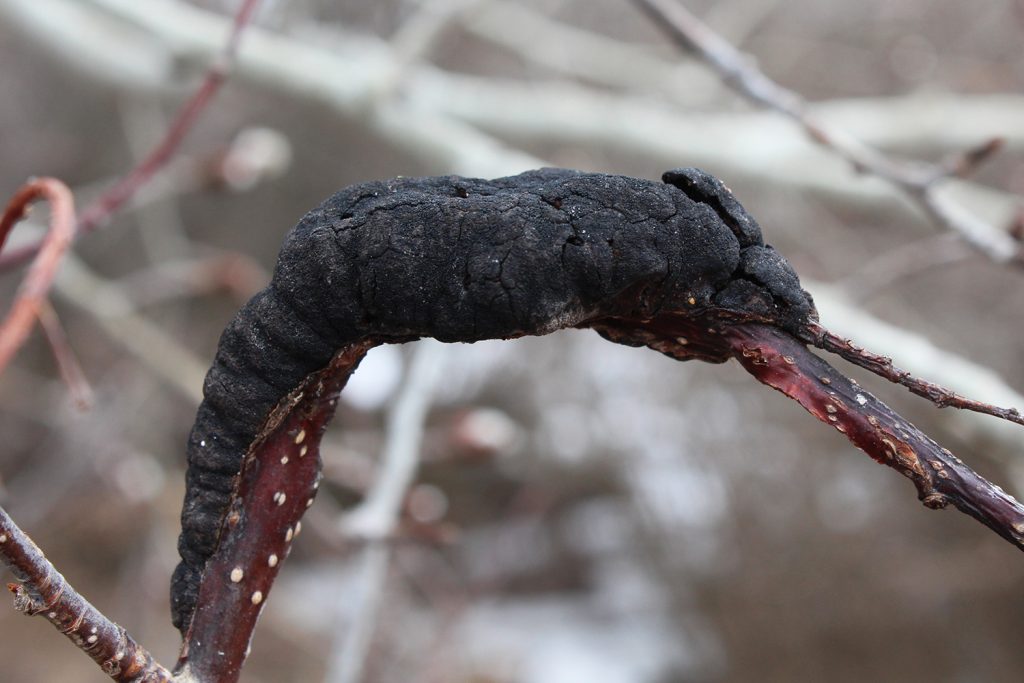Black Knot Disease
April 30, 2019 | Orchard | 4 Comments

We have a lot of chokecherries here on our acreage, which means we have a lot of Black Knot Disease. It looks an awful lot like a big chunk of dried up dog poop wrapped around the tree branches – pretty gross! Black knot is a fungal infection (Apiosporina morbosa ) that is endemic in prairie Canada, and it is particularly common in my region.

The Government of Alberta has published an article with a handy list of affected trees – black knot targets trees and bushes in the Prunus species. Besides chokecherries, the list includes Nanking cherries, apricots, sour cherries, and plums. While some cultivars of fruit trees are bred for black knot resistance, it is best to remove it any time you see it anywhere on your property.
There are not a lot of ways to deal with black knot, except for pruning. You will need to prune well back from the infected lump – at least 6 inches, though more is better. Dispose of the infected branches by burning them or removing them from the property immediately – the fungus can continue to grow and spread spores for months, even on dead branches. Once you are done, disinfect your pruning shears with a solution of 10% bleach in water, to prevent spreading the disease to other trees the next time you do any pruning.
Now is a great time to tackle pruning out black knot in your affected trees, since the affected trees and branches are much easier to see before the trees leaf out; the recommendation is to do it as early in the spring as possible, which, for us, is whenever the snow melts enough for us to be able to get to the affected trees. We have acres of scrubby chokecherry and caragana brush, so obviously we’re never going to get rid of all of it here, but I like to cut back affected trees that are close to our current orchard areas, since black knot can affect so many of the types of fruit we have planted here.

While it may be possible to save a tree that has become infected with black knot, it hits me as a losing battle. If you have infected trees, there is obviously a source sonewhere nearby, and it is likely that your susceptible tree will get re-infected at some point. Better to save on heartache, cut down the infected tree, and plant something that isn’t susceptible.
Of course, with our place being surrounded by scrubby brush full of infested chokecherries, I expect we’ll be battling black knot disease, but we try to keep our prunus fruit trees away from the most infected areas, and we remove black knot wherever we see it in the wild chokecherries. So far, it hasn’t been a huge issue, but it certainly has the potential to become a problem for us. Hopefully, we’ll be able to keep it out of our plums and cherries!



